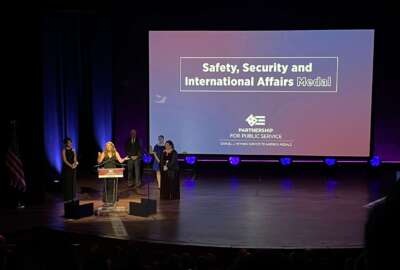Former tech titan Scott McNealy had an expression for how to focus one’s efforts for maximum effect. He called it putting all your wood behind one arrowhead. This idea implies diffusion of effort means no single strand of activity fully realizes.
The company he co-founded, Sun Microsystems, did just that. It concentrated on a single class of product. The market for dedicated engineering workstations using specialized reduced-instruction-set processors eventually gave way to PCs as microprocessors and software grew more capable. But the seven-word strategy remains a useful way to think about life.
I call May through September the “Sammies Season” on The Federal Drive with Tom Temin show. Each week we air an interview with one of the finalists in the Service To America Medals program put on by the Partnership for Public Service. Many of the finalists really have changed the world through strong focus on something specific.
Bob McGaughey chuckled over having attended the initial reception for the Sammies finalists. The research forester with the U.S. Forest Service exhibited a reaction many Sammies finalists have expressed to me over the years. In effect: “What am I doing here?” They’re often modest about accomplishments manifestly impressive to others.
McCaughey early on learned programming. For many years, his enduring opus has concerned something that sounds arcane. He developed a program that takes data generated by light detection and ranging data, LiDAR. LiDAR, from airborne instruments, by itself produces lots of data but not much wisdom. McCaughey’s FUSION program makes LiDAR data useful in assessing large areas of forest or any other type of terrain. He’s always improving and adding to the program, which is freely distributed for use by anyone needing to interpret LiDAR data.
If you think the Forest Service has an important mission, then you can see how a single forester tapping away in C++ has helped enable that mission.
For some, the arrowhead is aimed at a theme. For the Government Accountability Office’s Biza Repko, its delving into narrow corners of the transportation system and pulling out ways to improve safety. She nudged the National Highway Transportation Safety Administration to diversity the anatomies of crash test dummies so they’re no longer all average-sized males. She prodded more than the tiny sliver of the railroad industry participating in a safety reporting program.
I once interviewed a man who’d been a NASA project scientist for decades. He oversaw a pair of satellites starting through their conception in 1972, their launch in 1977, and then for decades after. If I recall correctly, it was the Voyager I and II devices, which zoomed around several planets and eventually left the solar system.
Talk about dedication. I remember asking offhandedly if the satellites were like members of his own family, he’d been doting over them for so long. He enthusiastically said yes, they were an abiding presence at the dinner table discussions as his own human children were growing up.
You see this focus in companies too. A small Virginia company called Electra.aero concentrates on an extreme niche: very short takeoff and landing, hybrid powered airplanes with a technique known as blown lift. How’s that for specialized? It has development contracts with the Navy and Air Force. Like a hybrid car, the company’s planes have both batteries and an engine to charge the batteries. I asked founder John Langford if fuel capacity was therefore the flight distance limiter. He said, no, it’s people’s bladders. Because the planes at this point have limited payload capacity, they aren’t capable of carrying amenities like lavatories and associated plumbing aloft.
Such people don’t fit the cliched descriptions like “single minded.” Neither fanatics nor zealots, they simply have marshaled abiding enthusiasm for something important and for which they have talent. One presumes they have hobbies or other interests, but professionally they don’t dissipate their energies.
Nearly Useless Factoid
By Michele Sandiford
Approximately 25% of all Western medicines on the market today come from plants found only in tropical rain forests.
Source: Arbor Day Foundation
Copyright
© 2024 Federal News Network. All rights reserved. This website is not intended for users located within the European Economic Area.






